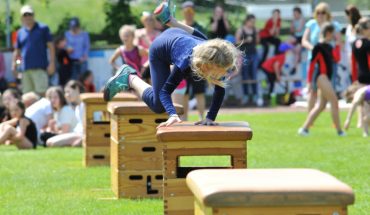New research being presented this week at the Diabetes UK Professional Conference 2023 has revealed that taking short breaks from sitting can help people with type 1 diabetes better manage their blood sugar levels. Frequent, bite-sized bouts of activity led to improvements in blood sugar levels, potentially reducing the risk of life-altering diabetes-related complications such as heart attack and stroke.
Sitting for long periods is known to be harmful to health, increasing the risk of conditions such as heart disease. It can also affect how the body responds to insulin. Previous research has shown that breaking up periods of sitting with short, frequent walks can help people with type 2 diabetes reduce their blood sugar levels and risk of complications.
With funding from Diabetes UK, Dr Matthew Campbell at the University of Sunderland investigated, for the first time, the impact of breaking up sedentary time on blood sugar levels in people with type 1 diabetes.
Thirty-two participants completed two seven-hour sitting sessions over a two-week period. During one session, participants remained seated for the full seven hours. During the other session, they broke up their sitting time with three-minute bouts of light intensity walking every 30 minutes.
Participants wore a continuous glucose monitor (CGM) to track their blood sugar levels for a 48-hour period during and after each sitting session. They were given a standardised breakfast and lunch, and were asked to stick to the same diet, activity levels and insulin doses over the study period.
The team found that taking regular walking breaks resulted in lower average blood sugar levels (6.9mmol/L) over the 48-hour study period, compared to uninterrupted sitting (8.2mmol/L). This increased time with blood sugar levels in the target range (3.9-10 mmol/L) by 14 percentage points, and crucially, did not cause blood sugars to become dangerously low.
Type 1 diabetes is an autoimmune condition affecting nearly 400,000 people in the UK. The condition occurs when the body’s immune system attacks the insulin-producing cells of the pancreas. This means the pancreas can no longer produce insulin, leading to high blood sugar levels. Careful blood sugar management is crucial for people with type 1 diabetes, as having high blood sugar levels over a long period of time can lead to serious diabetes-related complications such as kidney failure, eye and foot problems, heart attack and stroke.
Dr Matthew Campbell, Principal Investigator in Cardiovascular and Metabolic Medicine at the University of Sunderland, said:
“These results provide the first piece of evidence that simply breaking up prolonged periods of time sitting with light-intensity activity can increase the amount of time spent with blood sugar levels in the target range. Importantly, this strategy does not seem to increase the risk of potentially dangerous blood glucose lows which are a common occurrence with more traditional types of physical activity and exercise.
“Breaking up prolonged sitting with light-intensity activity is something that people can do irrespective of whether they currently exercise or not. For some people, ‘activity snacking’ could be an important stepping-stone towards more regular physical activity or exercise, whereas for others, it may be a simple and acceptable intervention to help manage blood glucose levels.
“Following on from these initial findings, our preliminary analyses also show that breaking up prolonged sitting time with light-activity breaks may improve blood vessel health and reduce the risk of diabetes-related complications.”
Dr Elizabeth Robertson, Director of Research at Diabetes UK, which funded the study, said:
“For people with type 1 diabetes, managing blood sugar levels day in day out is relentless. Being physically active is important in managing the condition, but building exercise into your daily routine can be challenging, and even those who exercise frequently can often spend a lot of time sitting or lying down.
“It’s incredibly encouraging that these findings suggest that making a simple, practical change – such as taking phone calls while walking, or setting a timer to remind you to take breaks – to avoid sitting for long periods could have such a profound effect on blood sugar levels.
“Breaking up sitting time with short bursts of activity offers a cost-free way to help people with type 1 diabetes manage their blood sugar levels and potentially reduce their risk of future complications. We look forward to further research to understand the long-term benefits of this approach.”
- New lipid-based pathway discovered as key to memory formation - 25th June 2025
- Crucial link could explain how Alzheimer’s takes hold - 25th June 2025
- Understanding Your Mind Can Improve Daily Life - 25th June 2025







